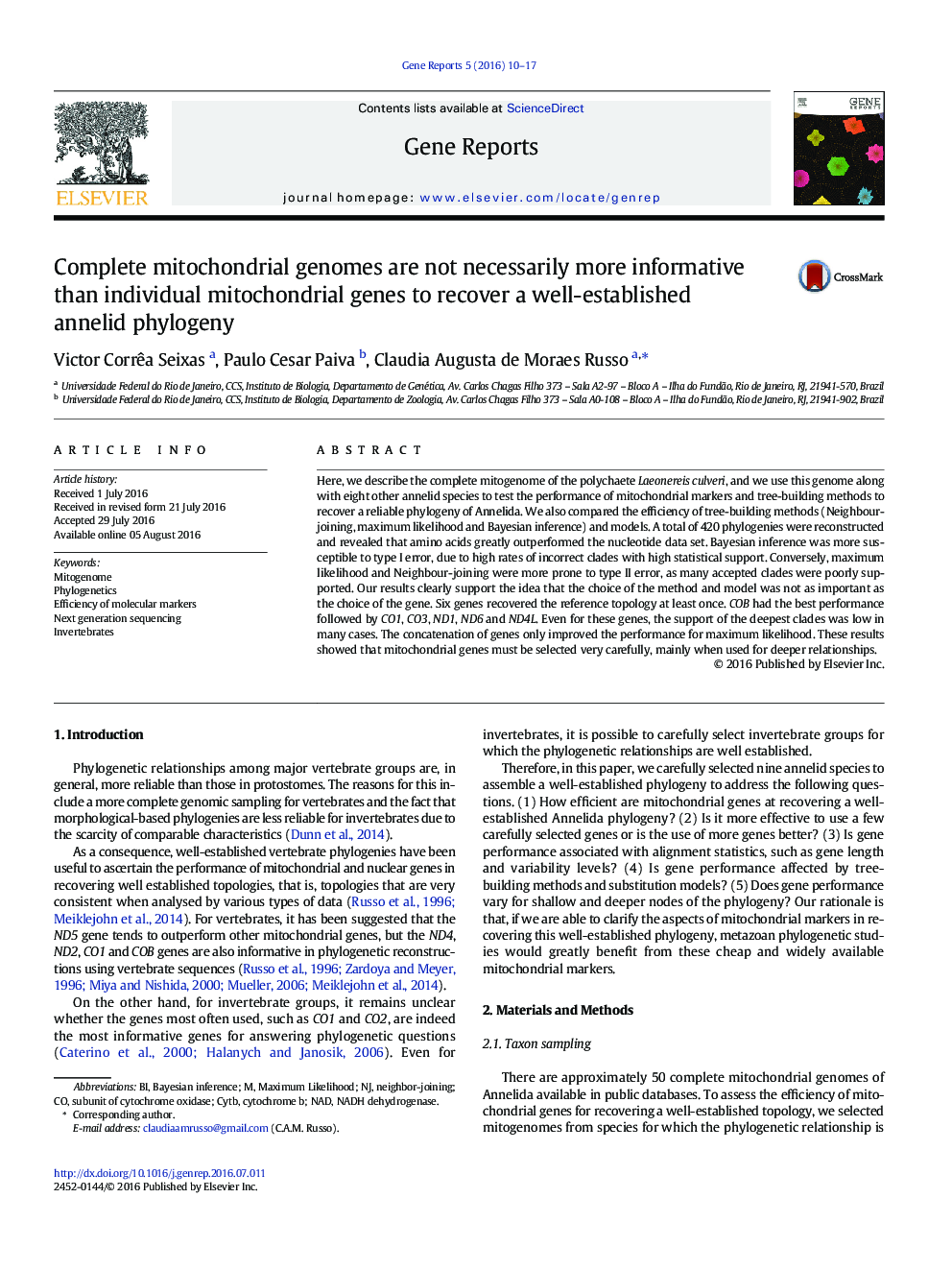| Article ID | Journal | Published Year | Pages | File Type |
|---|---|---|---|---|
| 2820460 | Gene Reports | 2016 | 8 Pages |
Abstract
Here, we describe the complete mitogenome of the polychaete Laeonereis culveri, and we use this genome along with eight other annelid species to test the performance of mitochondrial markers and tree-building methods to recover a reliable phylogeny of Annelida. We also compared the efficiency of tree-building methods (Neighbour-joining, maximum likelihood and Bayesian inference) and models. A total of 420 phylogenies were reconstructed and revealed that amino acids greatly outperformed the nucleotide data set. Bayesian inference was more susceptible to type I error, due to high rates of incorrect clades with high statistical support. Conversely, maximum likelihood and Neighbour-joining were more prone to type II error, as many accepted clades were poorly supported. Our results clearly support the idea that the choice of the method and model was not as important as the choice of the gene. Six genes recovered the reference topology at least once. COB had the best performance followed by CO1, CO3, ND1, ND6 and ND4L. Even for these genes, the support of the deepest clades was low in many cases. The concatenation of genes only improved the performance for maximum likelihood. These results showed that mitochondrial genes must be selected very carefully, mainly when used for deeper relationships.
Keywords
Related Topics
Life Sciences
Biochemistry, Genetics and Molecular Biology
Genetics
Authors
Victor Corrêa Seixas, Paulo Cesar Paiva, Claudia Augusta de Moraes Russo,
